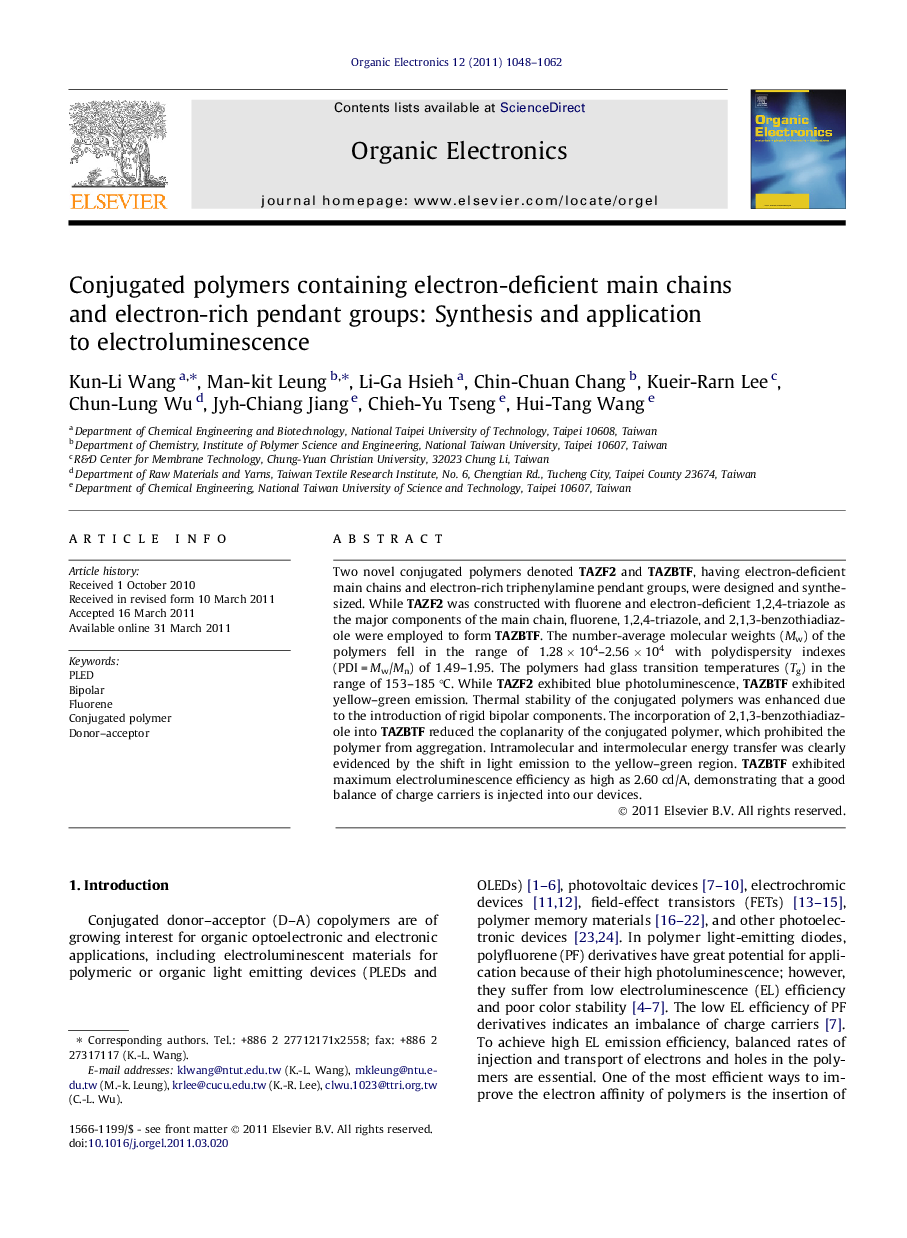| Article ID | Journal | Published Year | Pages | File Type |
|---|---|---|---|---|
| 1267703 | Organic Electronics | 2011 | 15 Pages |
Two novel conjugated polymers denoted TAZF2 and TAZBTF, having electron-deficient main chains and electron-rich triphenylamine pendant groups, were designed and synthesized. While TAZF2 was constructed with fluorene and electron-deficient 1,2,4-triazole as the major components of the main chain, fluorene, 1,2,4-triazole, and 2,1,3-benzothiadiazole were employed to form TAZBTF. The number-average molecular weights (Mw) of the polymers fell in the range of 1.28 × 104–2.56 × 104 with polydispersity indexes (PDI = Mw/Mn) of 1.49–1.95. The polymers had glass transition temperatures (Tg) in the range of 153–185 °C. While TAZF2 exhibited blue photoluminescence, TAZBTF exhibited yellow–green emission. Thermal stability of the conjugated polymers was enhanced due to the introduction of rigid bipolar components. The incorporation of 2,1,3-benzothiadiazole into TAZBTF reduced the coplanarity of the conjugated polymer, which prohibited the polymer from aggregation. Intramolecular and intermolecular energy transfer was clearly evidenced by the shift in light emission to the yellow–green region. TAZBTF exhibited maximum electroluminescence efficiency as high as 2.60 cd/A, demonstrating that a good balance of charge carriers is injected into our devices.
Graphical abstractNovel conjugated polymers containing electron-deficient 1,2,4-triazole main chains and electron-rich triphenylamine pendant groups were prepared. The novel polymers showed high glass transition temperatures from 153 to 185 °C due to their rigid bipolar structure. The electroluminescence of the polymers shows maximum luminescence efficiency as high as 2.60 cd/A. The properties of polymers with same functional groups but different bonding were also investigated.Figure optionsDownload full-size imageDownload as PowerPoint slideHighlights► Conjugated polymers containing electron-deficient and electron-rich groups. ► Tuning the HOMO–LUMO levels by changing molecule bonding. ► Thermal stability enhanced by the introduction of rigid bipolar components. ► Relationship between polymer structures and optical properties.
